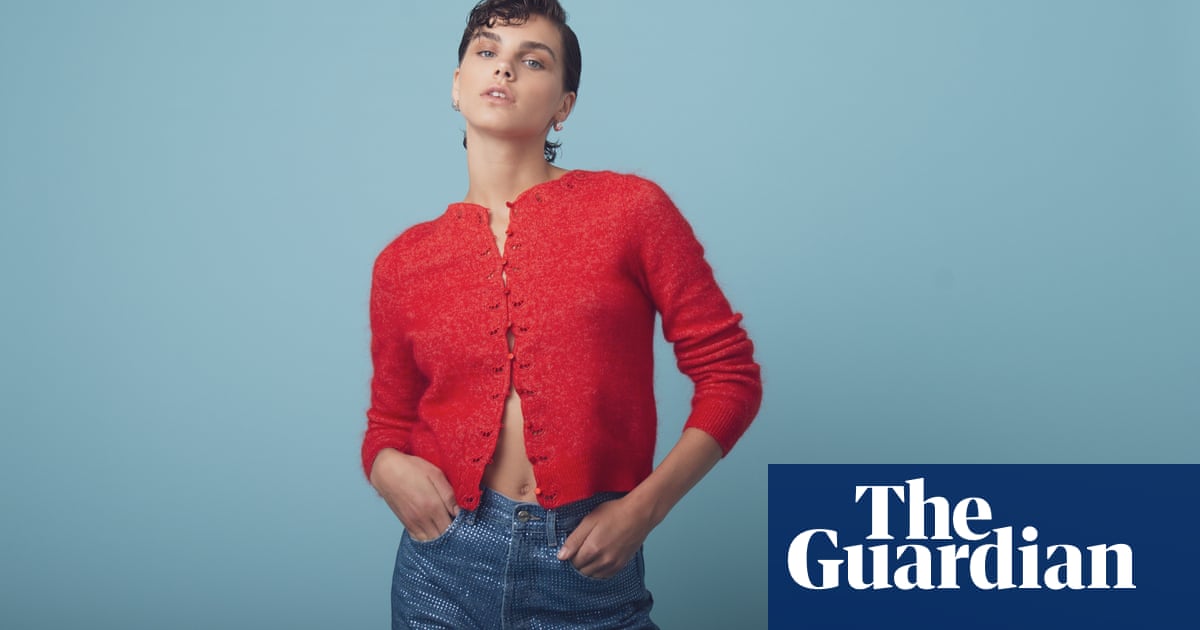
Backstage after one of the London fashion week shows, I complimented the editor of a glossy magazine on the trouser suit she was wearing. She thanked me, and added – raising her voice a notch, glancing around – “It’s rented, actually.” Then she said that my dress was very pretty, too. To which I was, thankfully, able to respond – while possibly raising my voice just a smidgen – “This is rented, too.”
Rental is hotter than Balenciaga right now. “Thanks, I rented it” is the ultimate front row flex. After wearing the same clothes for so long, I wanted to wear something new for the first real-life London fashion week in ages, so I rented three dresses from My Wardrobe: a long, loose Ganni wrap dress; a graphic-print midi-length day dress by Victoria Beckham; and a floor-length evening column with dramatic fringed sleeves. The cost was between £6 and £24 per day, per dress. My craving for fashion was satisfied – and I was way more on trend than I’d have been after a shopping spree.
A Circular Fashion Ecosystem Report [PDF] commissioned by the British Fashion Council, which surveyed the habits of high-intensity shoppers – those who buy two or more pieces a month – found that 37% are already renting clothes as well as buying. This trend is about environmental values but it is also about habits. Spotify subscriptions have replaced stacks of CDs; Netflix has killed the DVD. Having lots of stuff is kind of over.
Rental is not a get-out-of-jail-free card for fashion. Transportation of clothes, and the cleaning process, both entail carbon emissions. If you drive 10 miles to pick up a pair of jeans, drive home, wear them once, dry-clean them and then do the same journey, you’re not doing the planet any favours. But some rental companies use cycle couriers or electric vans. And almost all undertake wet-washing or liquid CO2 cleaning rather than dry cleaning.
The largest slice of the rental market is in the kind of special-occasion clothes we tend to wear infrequently, an area in which the rental option offers significant carbon savings, by satisfying our party-wear desires with access to dresses that already exist. If you want people to stop drinking Coca-Cola, you need to invent Diet Coke, and rental fashion is to retail what Diet Coke is to the real thing.
My hunch is that most women who love fashion are into the idea of renting – on principle. But the logistics of renting a physical object can be a headache, as anyone who has ever spent time at a car hire desk in an airport knows all too well.
At the moment, “rental” means different things. Renting from My Wardrobe or Rotaro, or direct from Selfridges, feels similar to online fashion retail: find what you like, pick your size, pop it in your basket. (My Wardrobe also has a boutique within Harrods where you can try on, and rent, a selection of Harrods’ stock.) Another rental company, Onloan, runs on a membership model, so you pay a fee each month to rotate new pieces through your wardrobe. Cocoon and BagButler are just for renting fabulous handbags, if that’s your thing. Hurr and By Rotation are peer-to-peer rental, matchmaking you with dresses currently in other people’s wardrobes.
My experience is that peer-to-peer requires a little more time investment, but can be rewarding. After renting a dress that I loved on By Rotation, I went straight to the same lender’s wardrobe the next time and struck gold again. And it felt like a win.












